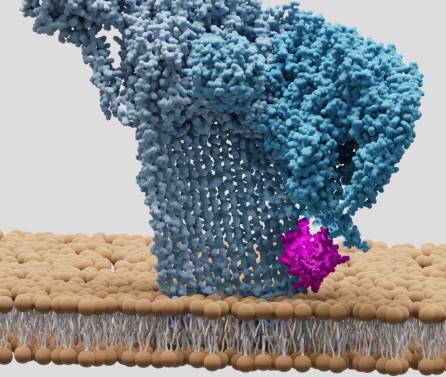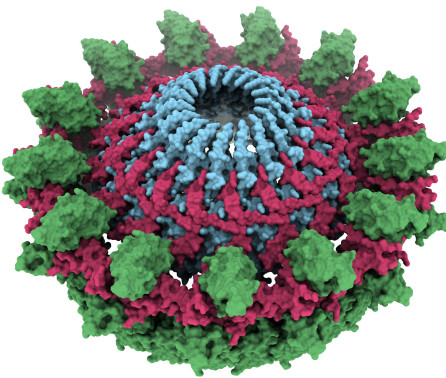BibTex format
@article{Gumbart:2014:10.1371/journal.pcbi.1003475,
author = {Gumbart, JC and Beeby, M and Jensen, GJ and Roux, B},
doi = {10.1371/journal.pcbi.1003475},
journal = {PLOS Computational Biology},
title = {Escherichia coli peptidoglycan structure and mechanics as predicted by atomic-scale aimulations},
url = {http://dx.doi.org/10.1371/journal.pcbi.1003475},
volume = {10},
year = {2014}
}
RIS format (EndNote, RefMan)
TY - JOUR
AB - Bacteria face the challenging requirement to maintain their shape and avoid rupture due to the high internal turgorpressure, but simultaneously permit the import and export of nutrients, chemical signals, and virulence factors. The bacterialcell wall, a mesh-like structure composed of cross-linked strands of peptidoglycan, fulfills both needs by being semi-rigid,yet sufficiently porous to allow diffusion through it. How the mechanical properties of the cell wall are determined by themolecular features and the spatial arrangement of the relatively thin strands in the larger cellular-scale structure is notknown. To examine this issue, we have developed and simulated atomic-scale models of Escherichia coli cell walls in adisordered circumferential arrangement. The cell-wall models are found to possess an anisotropic elasticity, as knownexperimentally, arising from the orthogonal orientation of the glycan strands and of the peptide cross-links. Other featuressuch as thickness, pore size, and disorder are also found to generally agree with experiments, further supporting thedisordered circumferential model of peptidoglycan. The validated constructs illustrate how mesoscopic structure andbehavior emerge naturally from the underlying atomic-scale properties and, furthermore, demonstrate the ability of allatomsimulations to reproduce a range of macroscopic observables for extended polymer meshes.
AU - Gumbart,JC
AU - Beeby,M
AU - Jensen,GJ
AU - Roux,B
DO - 10.1371/journal.pcbi.1003475
PY - 2014///
SN - 1553-734X
TI - Escherichia coli peptidoglycan structure and mechanics as predicted by atomic-scale aimulations
T2 - PLOS Computational Biology
UR - http://dx.doi.org/10.1371/journal.pcbi.1003475
UR - http://hdl.handle.net/10044/1/31234
VL - 10
ER -

